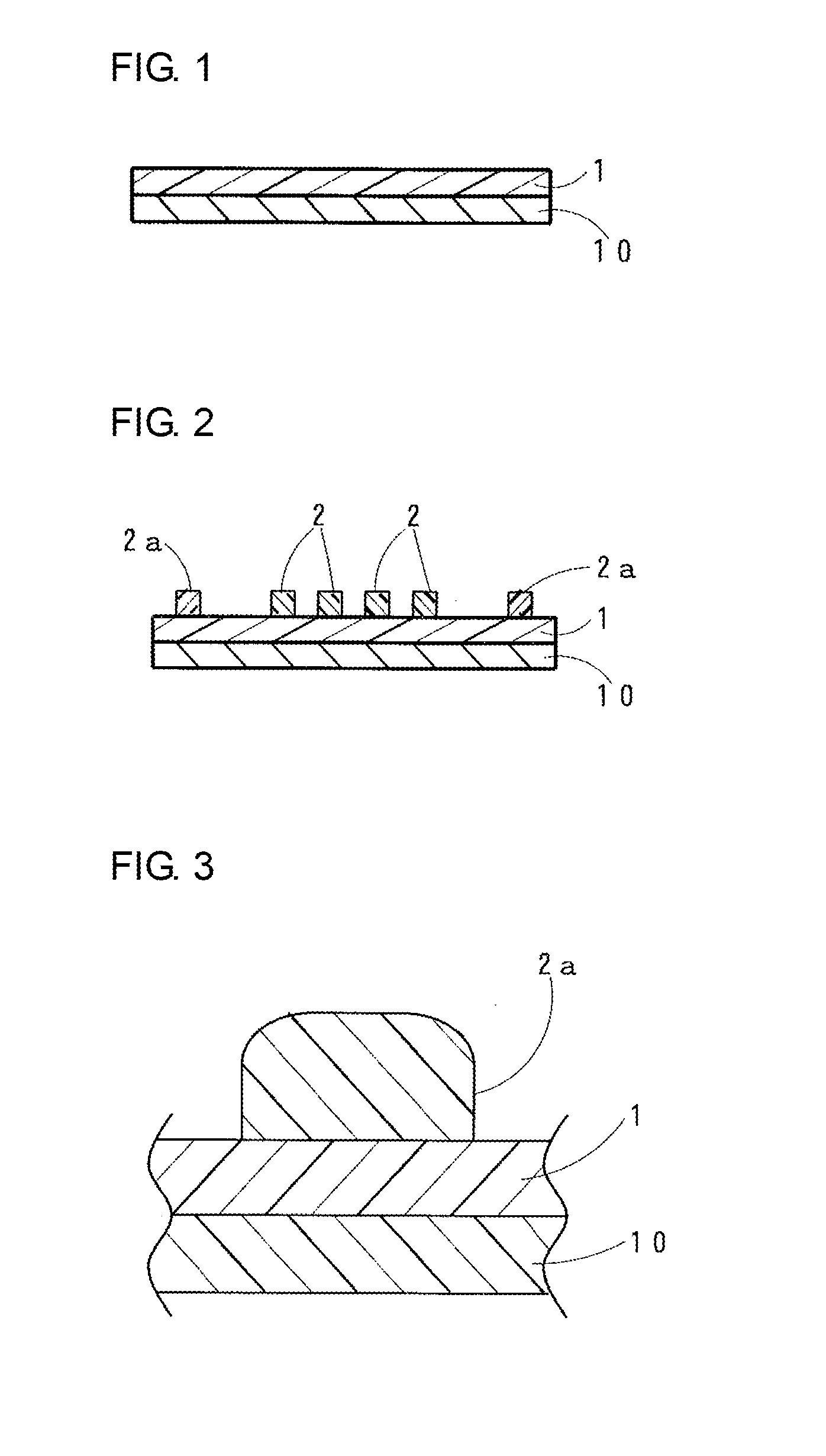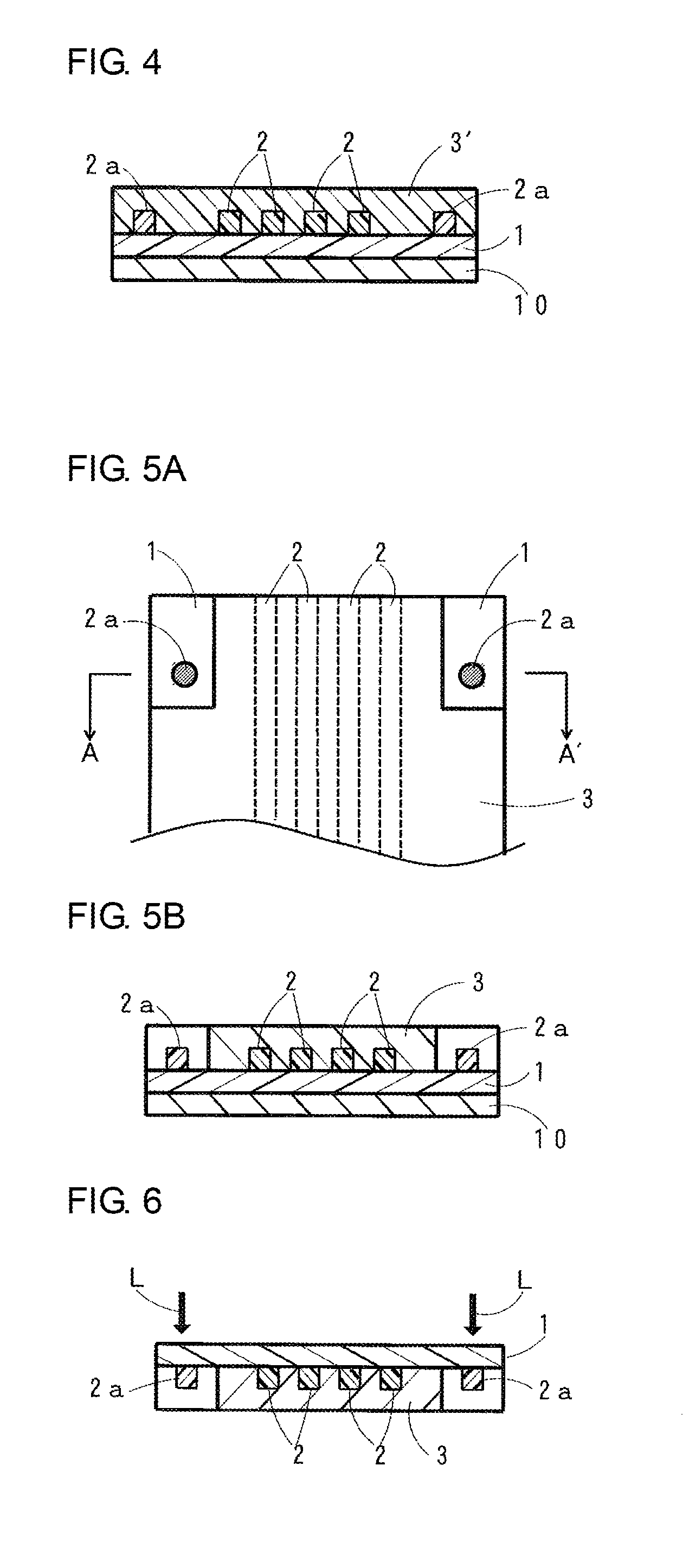Manufacturing method for an optical waveguide and optical waveguide body used therefor
a technology of optical waveguides and manufacturing methods, applied in the direction of instruments, cladded optical fibres, optical elements, etc., can solve the problems of poor visibility of marks, inability to achieve efficient optical connection at the coupled portion, and difficult recognition, so as to achieve sufficient cut position accuracy, improve visibility, and reduce the effect of refractive index
- Summary
- Abstract
- Description
- Claims
- Application Information
AI Technical Summary
Benefits of technology
Problems solved by technology
Method used
Image
Examples
example 1
Formation of Undercladding Layer
[0051]The above-mentioned undercladding layer forming material (varnish) was applied to a front surface of a substrate formed of glass (manufactured by Central Glass Co., Ltd., 140 mm×140 mm×thickness 1.1 mm) using a spin coater (1X-DX2 manufactured by MIKASA CO., LTD.). After that, drying treatment at 130° C. for 10 minutes was carried out in a drying oven to form an applied layer (undercladding layer before being cured). Then, an exposure machine (MA-60A manufactured by MIKASA CO., LTD.) and an ultra high pressure mercury-vapor lamp (USH-250D manufactured by USHIO INC.) were used to apply an ultraviolet ray (having a wavelength of 365 nm) to the entire front surface of the undercladding layer before being cured to carry out exposure so that the accumulated light quantity was 2,000 mJ / cm2. Then, heating treatment at 130° C. for 10 minutes was carried out to manufacture the undercladding layer (having a thickness of 25 μm) (see FIG. 1).
(Formation of C...
PUM
 Login to View More
Login to View More Abstract
Description
Claims
Application Information
 Login to View More
Login to View More - R&D
- Intellectual Property
- Life Sciences
- Materials
- Tech Scout
- Unparalleled Data Quality
- Higher Quality Content
- 60% Fewer Hallucinations
Browse by: Latest US Patents, China's latest patents, Technical Efficacy Thesaurus, Application Domain, Technology Topic, Popular Technical Reports.
© 2025 PatSnap. All rights reserved.Legal|Privacy policy|Modern Slavery Act Transparency Statement|Sitemap|About US| Contact US: help@patsnap.com



